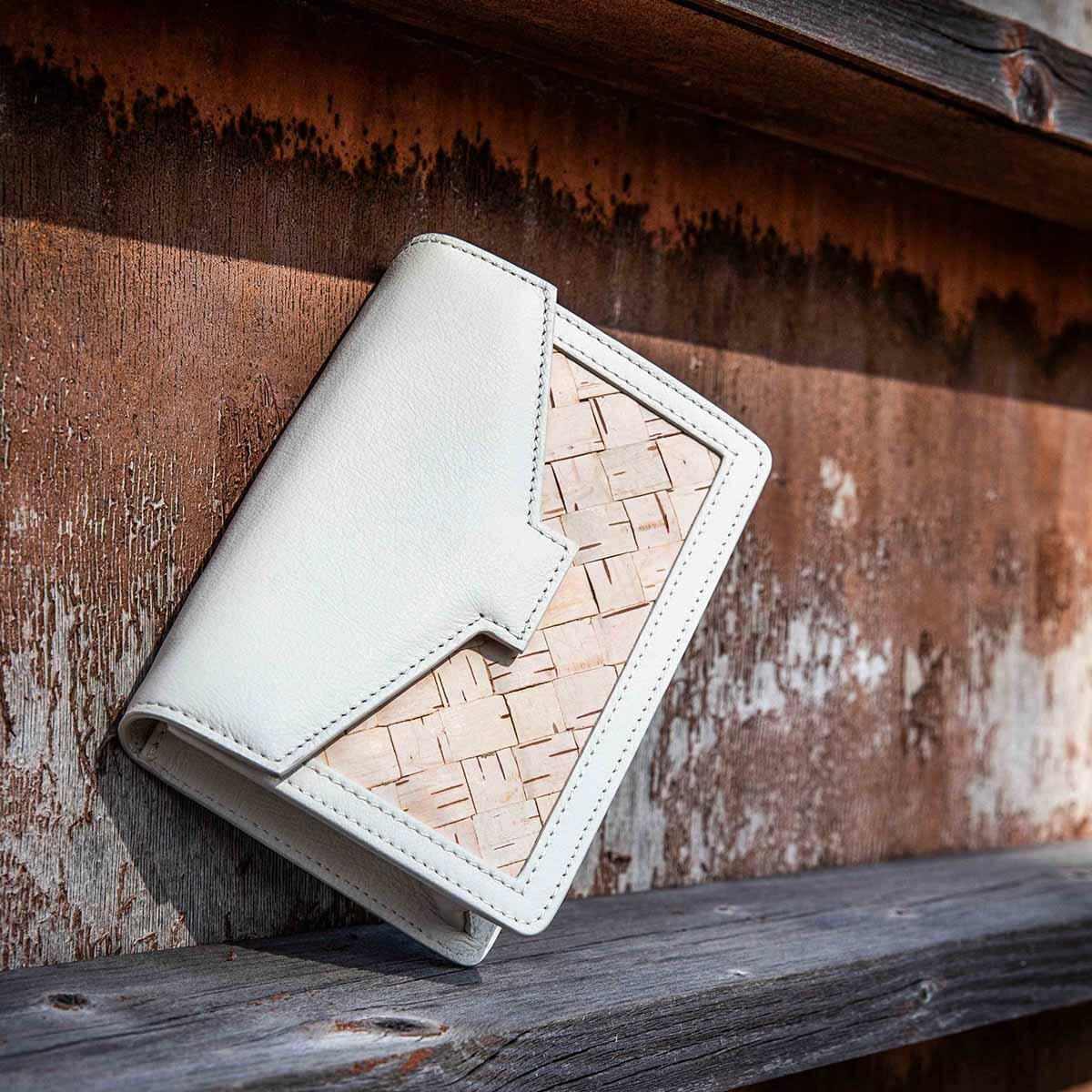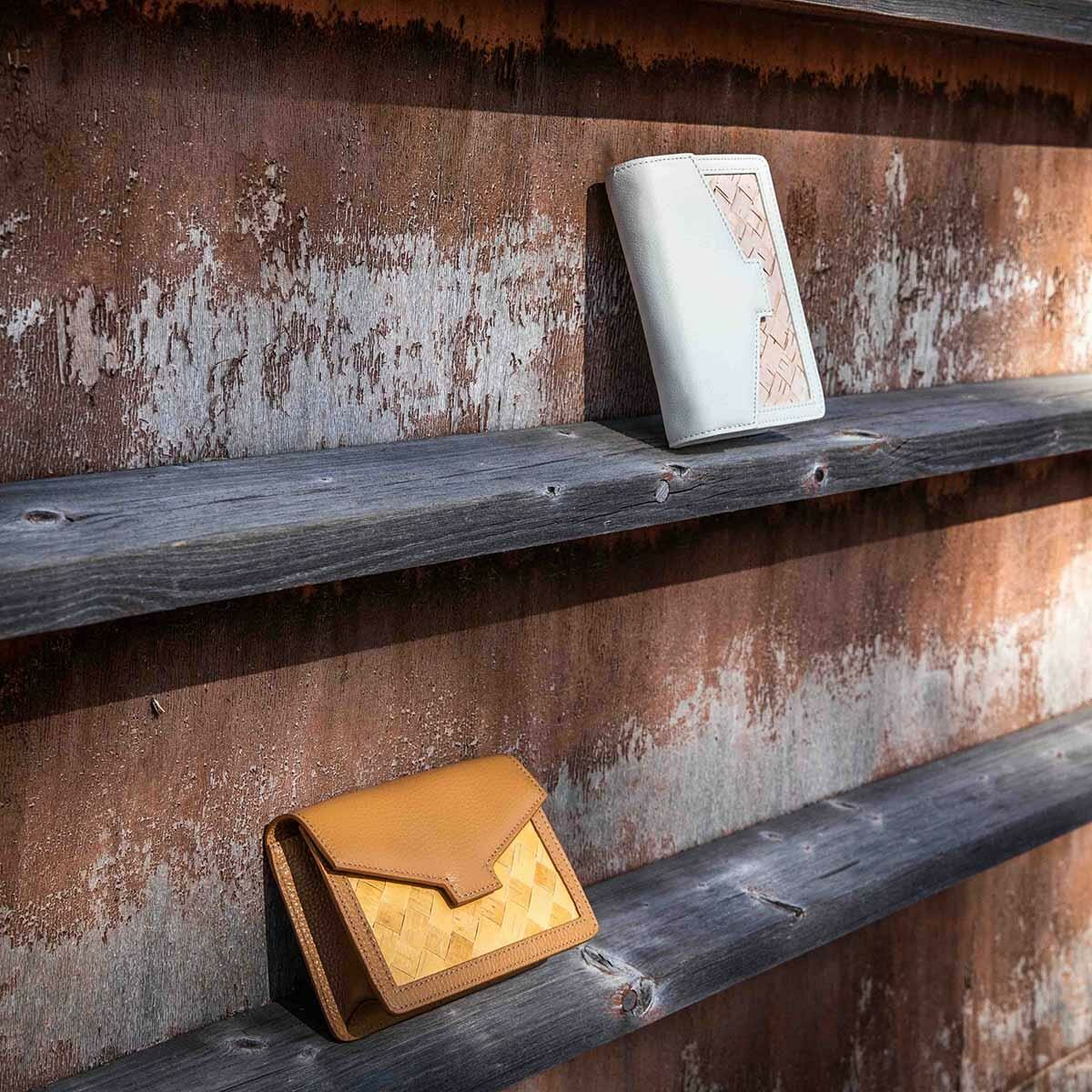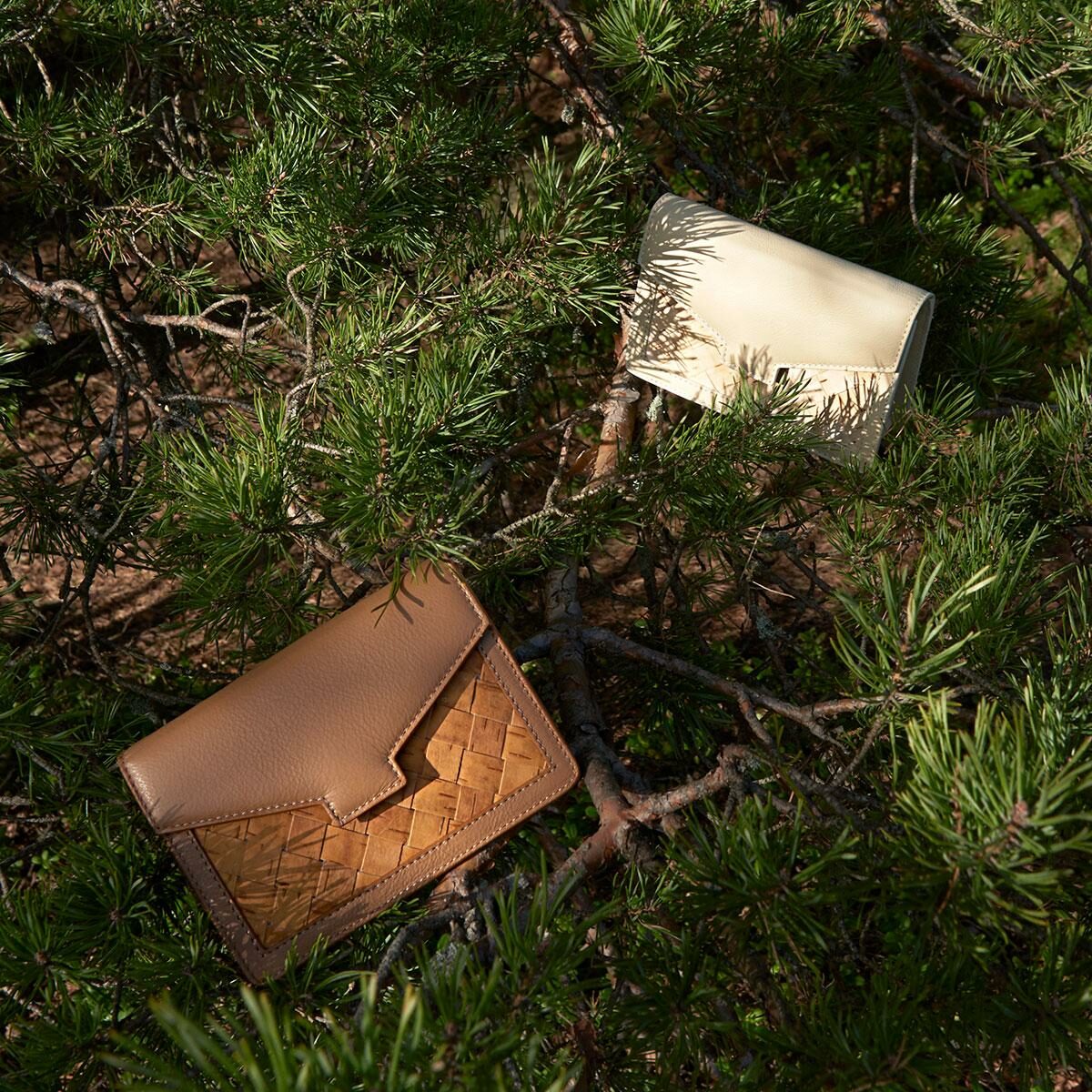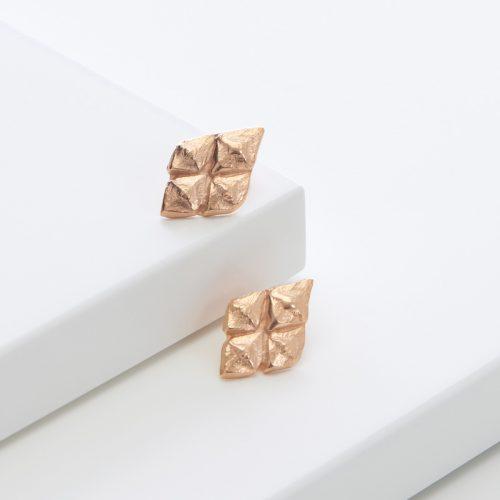Ulla & Veijo Haverinen
Birch bark
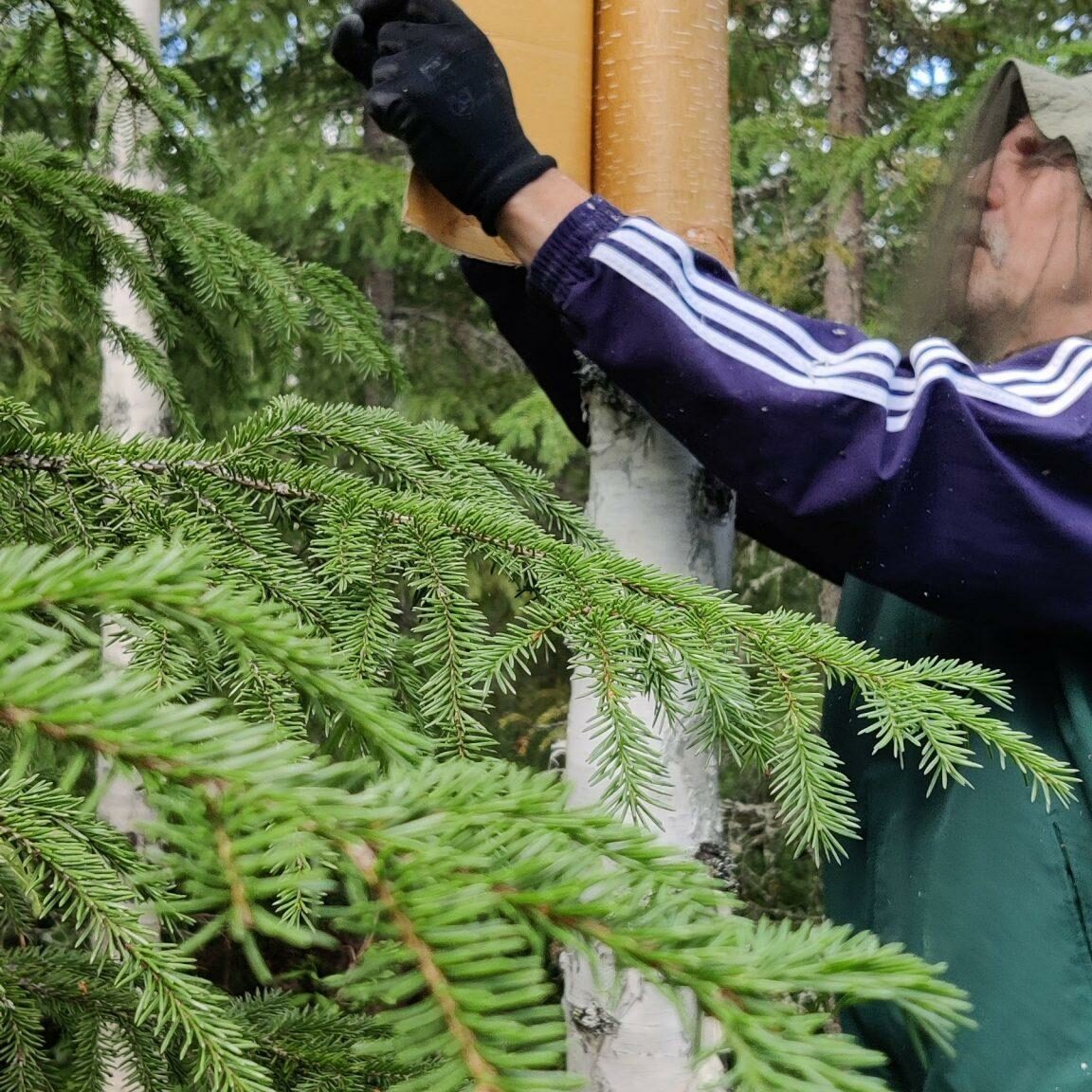
Natural materials re-used
We at Lovia look for our inspiration from the nature and are constantly looking for new ways to also incorporate this into our bags. One example of this is utilising birch bark in the details of our bags.
In our bags we have the honour to use birch bark from Ulla and Veijo Haverinen in Kuhmo. The use of birch bark is an age-old tradition in Finland, and this has inspired the Haverinens to seek knowledge and test it out on their own to create material! Now the birch bark lives on as material for our bags!
ESTABLISHED: 2020
EMPLOYEES: 2
LOCATION: KUHMO, SUOMI
Nature's finest
Birch bark has been utilised for centuries in Finland for multiple purposes, such as in clothes in the way of leather or fabric. It has even been dubbed as the plastic of the old days to its outstanding characteristics.
But how did the birch bark end up from the forest to cover the front panels of design bags? Ulla and Veijo Haverinen started collecting birch bark and learning about the material in early 2020. Removing it from the trees and collecting it must always be done under the permission of the land owner. The birch bark used in our bags are gathered from their family forest areas. Together they select the right kind of birch. The downy birch with the smoothest trunk is optimal, according to them. They create a diagonal cut on the trunk and after this the birch bark easily detaches. After this it is processed, split and cleaned. They are put under a weight to straighten out for a few days and after this are allowed to dry in air. After four weeks the sheets of birch bark are ready to be set on their way to become material for bags.
Greetings from Kuhmo
We want to give our partners a platform to have their voice heard, because without them we could not realise our thoughts of trash becoming treasure. Here we gathered greetings from Ulla Haverinen from her process with the birch bark material.
“As a child I saw how birch bark was utilised, and it has fascinated me ever since. I’ve read books and articles about utilising it, and learned the techniques required. One inspiration behind this has been Lovia and the weaving technique used in their designs.
The process itself is not difficult, rather it requires meticulousness and time. I have learned to identify how the birch bark acts in the thinning phase, and how the downy and silver birch are different. There are also differences in the colouring between species of birch.
Workin with Lovia has been rewarding and uncomplicated. We feel they truly appreciate our work. It is a special feeling to see your work embedded in a design product. We are also happy to be able to continue an age-old tradition in utilising this natural material.”
-Ulla Haverinen
Where can we do better?
Together with Ulla and Veijo we have been able to utilise the birch bark with traditional processing methods long lost. In the future we would love to discover new ways for small production, still respecting the traditional methods but bringing them into a modern form.
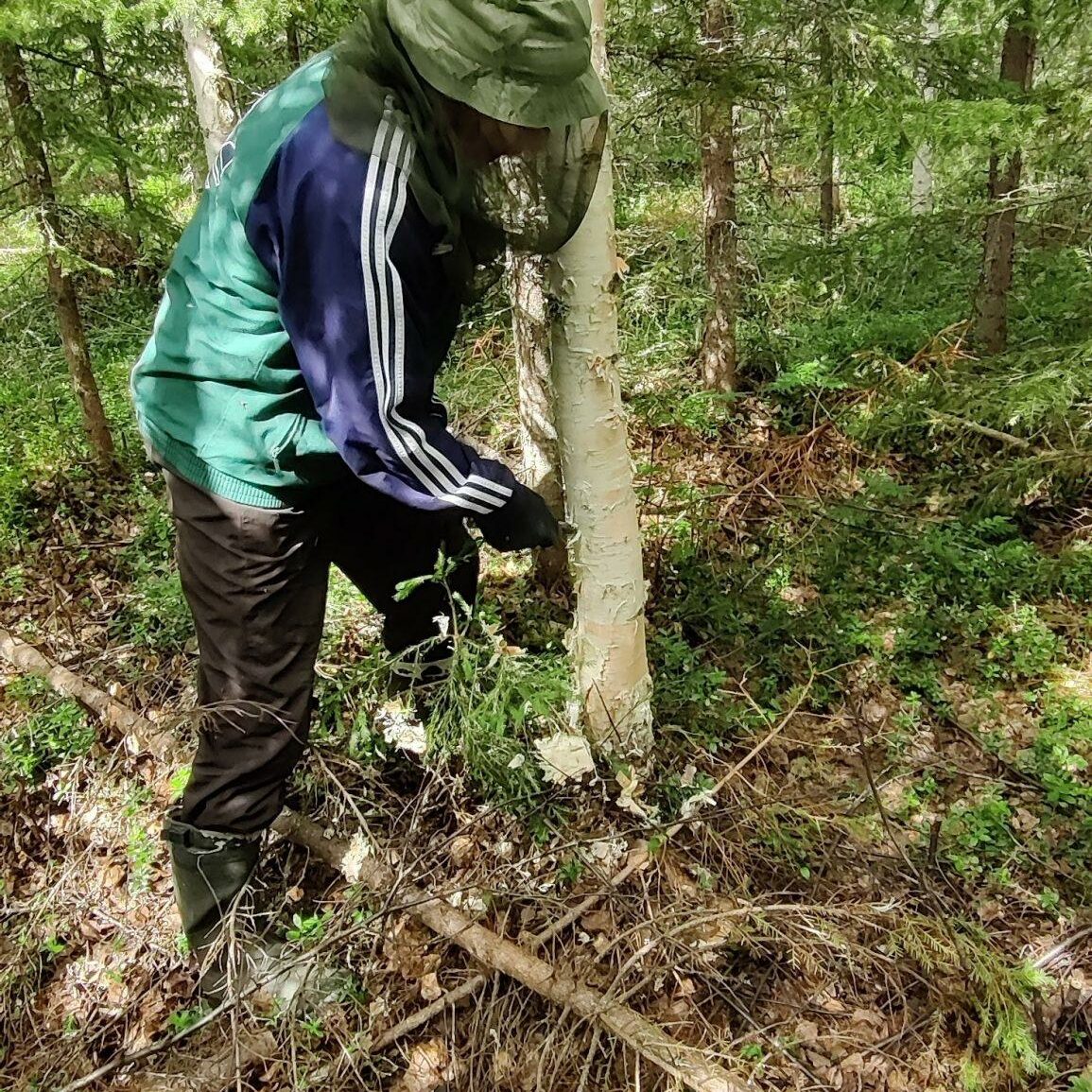
Ulla & Veijo haverinen
Birch bark
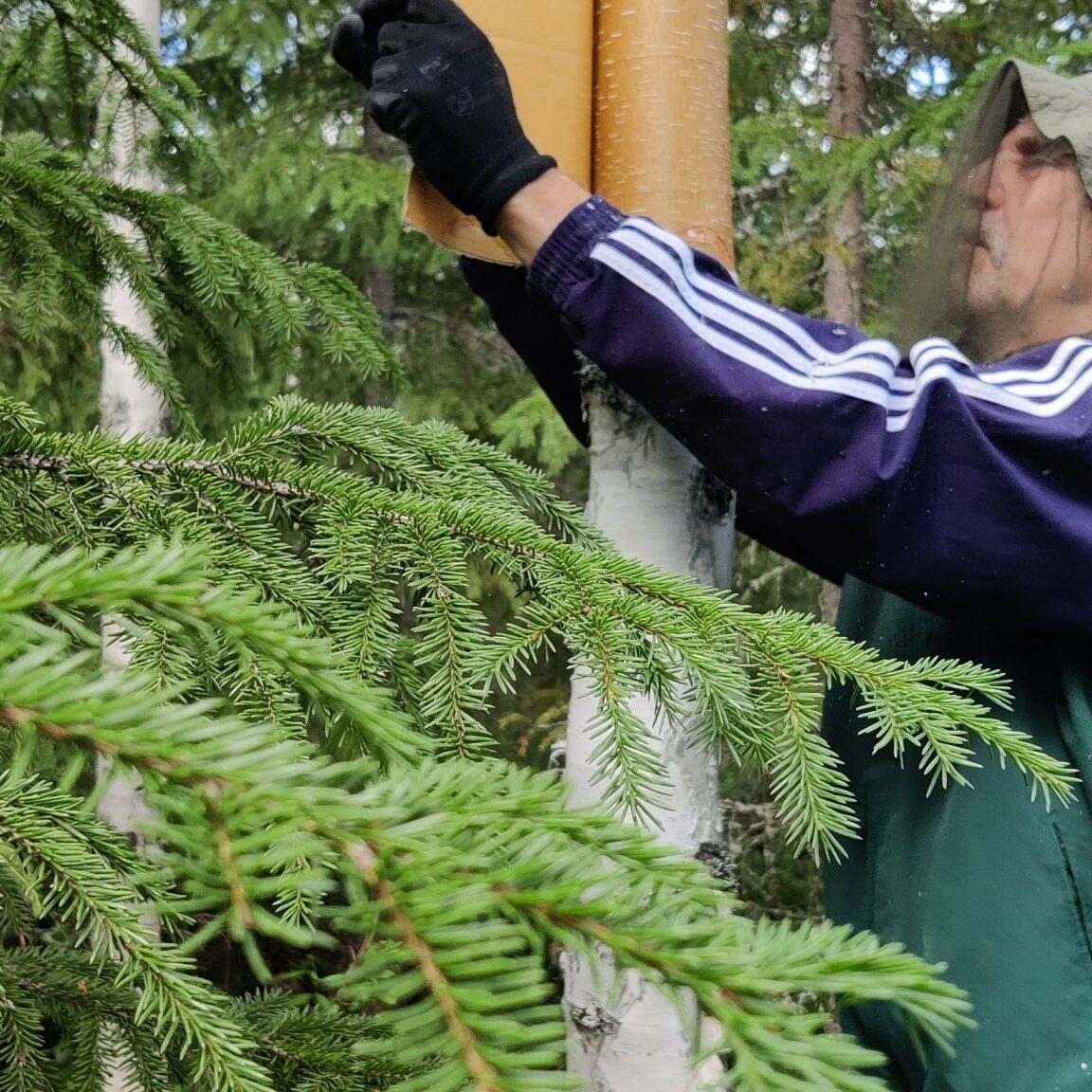
Natural materials re-used
We at Lovia look for our inspiration from the nature and are constantly looking for new ways to also incorporate this into our bags. One example of this is utilising birch bark in the details of our bags.
In our bags we have the honour to use birch bark from Ulla and Veijo Haverinen in Kuhmo. The use of birch bark is an age-old tradition in Finland, and this has inspired the Haverinens to seek knowledge and test it out on their own to create material! Now the birch bark lives on as material for our bags!
ESTABLISHED: 2020
EMPLOYEES: 2
LOCATION: KUHMO, SUOMI
Nature's finest
Birch bark has been utilised for centuries in Finland for multiple purposes, such as in clothes in the way of leather or fabric. It has even been dubbed as the plastic of the old days to its outstanding characteristics.
But how did the birch bark end up from the forest to cover the front panels of design bags? Ulla and Veijo Haverinen started collecting birch bark and learning about the material in early 2020. Removing it from the trees and collecting it must always be done under the permission of the land owner. The birch bark used in our bags are gathered from their family forest areas. Together they select the right kind of birch. The downy birch with the smoothest trunk is optimal, according to them. They create a diagonal cut on the trunk and after this the birch bark easily detaches. After this it is processed, split and cleaned. They are put under a weight to straighten out for a few days and after this are allowed to dry in air. After four weeks the sheets of birch bark are ready to be set on their way to become material for bags.
Greetings from Kuhmo
We want to give our partners a platform to have their voice heard, because without them we could not realise our thoughts of trash becoming treasure. Here we gathered greetings from Ulla Haverinen from her process with the birch bark material.
“As a child I saw how birch bark was utilised, and it has fascinated me ever since. I’ve read books and articles about utilising it, and learned the techniques required. One inspiration behind this has been Lovia and the weaving technique used in their designs.
The process itself is not difficult, rather it requires meticulousness and time. I have learned to identify how the birch bark acts in the thinning phase, and how the downy and silver birch are different. There are also differences in the colouring between species of birch.
Workin with Lovia has been rewarding and uncomplicated. We feel they truly appreciate our work. It is a special feeling to see your work embedded in a design product. We are also happy to be able to continue an age-old tradition in utilising this natural material.”
-Ulla Haverinen
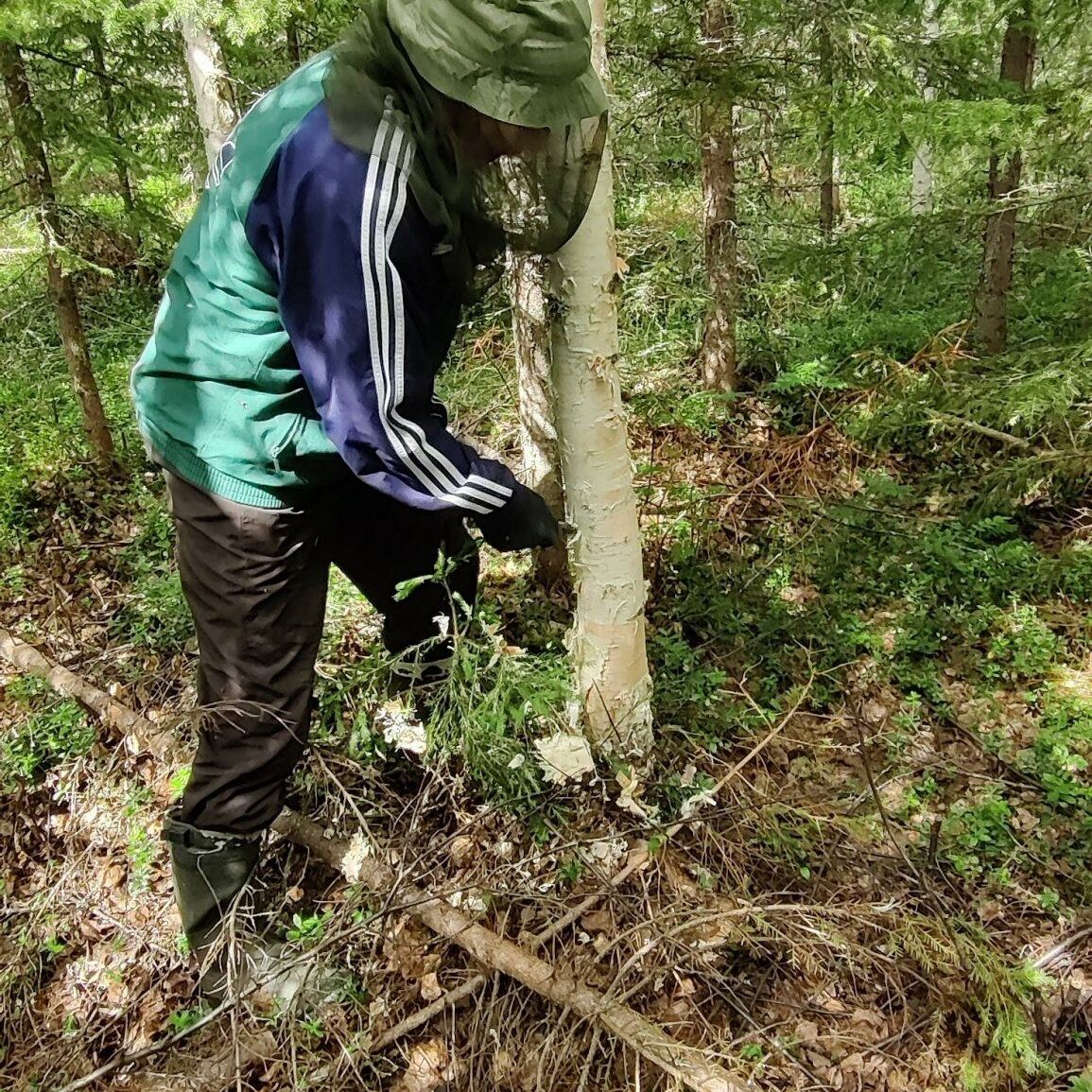
Where can we do better?
Together with Ulla and Veijo we have been able to utilise the birch bark with traditional processing methods long lost. In the future we would love to discover new ways for small production, still respecting the traditional methods but bringing them into a modern form.

